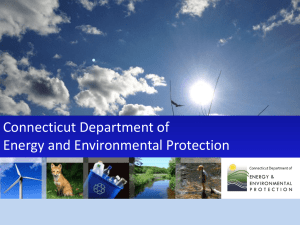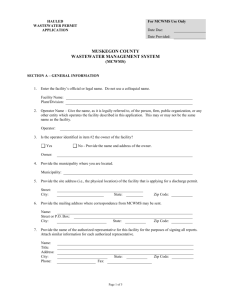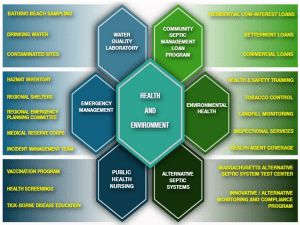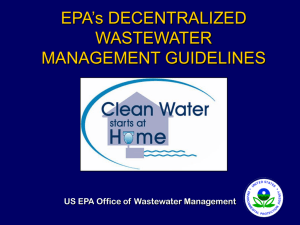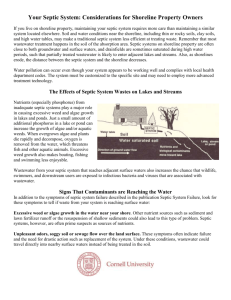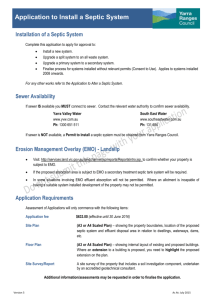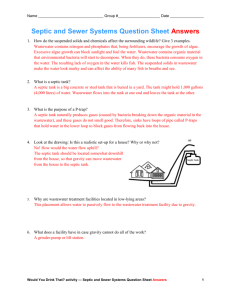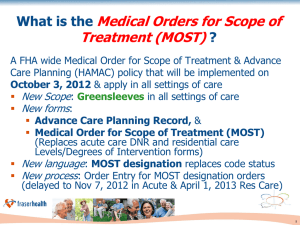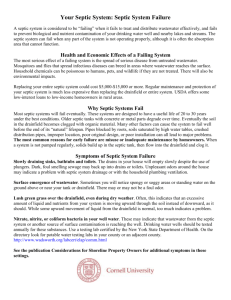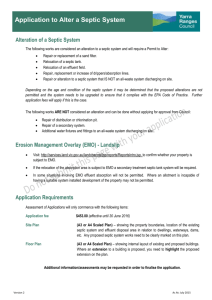Septic Tanks/Leach Fields - Iowa Waste Reduction Center
advertisement
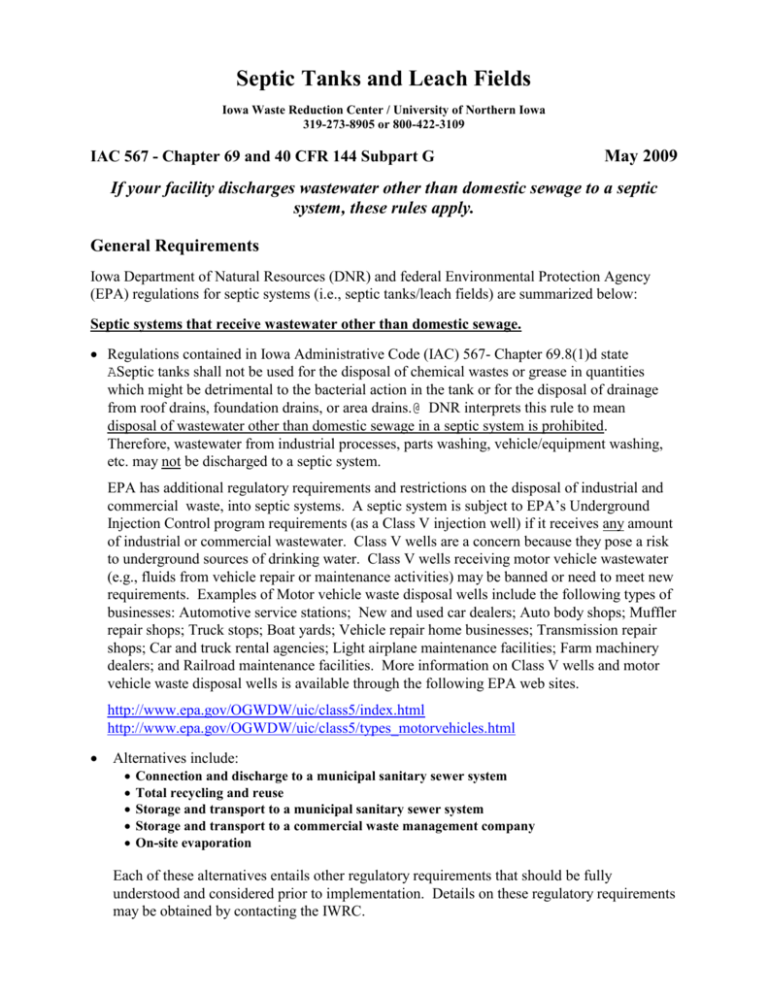
Septic Tanks and Leach Fields Iowa Waste Reduction Center / University of Northern Iowa 319-273-8905 or 800-422-3109 IAC 567 - Chapter 69 and 40 CFR 144 Subpart G May 2009 If your facility discharges wastewater other than domestic sewage to a septic system, these rules apply. General Requirements Iowa Department of Natural Resources (DNR) and federal Environmental Protection Agency (EPA) regulations for septic systems (i.e., septic tanks/leach fields) are summarized below: Septic systems that receive wastewater other than domestic sewage. Regulations contained in Iowa Administrative Code (IAC) 567- Chapter 69.8(1)d state ASeptic tanks shall not be used for the disposal of chemical wastes or grease in quantities which might be detrimental to the bacterial action in the tank or for the disposal of drainage from roof drains, foundation drains, or area drains.@ DNR interprets this rule to mean disposal of wastewater other than domestic sewage in a septic system is prohibited. Therefore, wastewater from industrial processes, parts washing, vehicle/equipment washing, etc. may not be discharged to a septic system. EPA has additional regulatory requirements and restrictions on the disposal of industrial and commercial waste, into septic systems. A septic system is subject to EPA’s Underground Injection Control program requirements (as a Class V injection well) if it receives any amount of industrial or commercial wastewater. Class V wells are a concern because they pose a risk to underground sources of drinking water. Class V wells receiving motor vehicle wastewater (e.g., fluids from vehicle repair or maintenance activities) may be banned or need to meet new requirements. Examples of Motor vehicle waste disposal wells include the following types of businesses: Automotive service stations; New and used car dealers; Auto body shops; Muffler repair shops; Truck stops; Boat yards; Vehicle repair home businesses; Transmission repair shops; Car and truck rental agencies; Light airplane maintenance facilities; Farm machinery dealers; and Railroad maintenance facilities. More information on Class V wells and motor vehicle waste disposal wells is available through the following EPA web sites. http://www.epa.gov/OGWDW/uic/class5/index.html http://www.epa.gov/OGWDW/uic/class5/types_motorvehicles.html Alternatives include: Connection and discharge to a municipal sanitary sewer system Total recycling and reuse Storage and transport to a municipal sanitary sewer system Storage and transport to a commercial waste management company On-site evaporation Each of these alternatives entails other regulatory requirements that should be fully understood and considered prior to implementation. Details on these regulatory requirements may be obtained by contacting the IWRC. Septic systems that receive only domestic sewage. In Iowa, local boards of health have primary responsibility for regulation of sewer systems serving less than 15 people, while DNR has primary responsibility for larger (public) systems. In conducting their activities, counties must comply with the minimum state standards developed by DNR. If counties fail to adopt or enforce DNR standards for smaller systems, DNR has concurrent authority to force compliance by individuals and the counties with the minimum standards for on-site wastewater treatment and disposal. Septic systems that receive only domestic sewage at a design rate of less than 1,500 gallons per day (i.e., a building with 15 occupants or less). Operation of these types of systems is allowed, provided a construction/modification permit is obtained from the applicable county sanitarian in accordance with county rules and DNR regulations contained in IAC 567 - Chapter 69. Contact the county sanitarian or health department for specific permitting procedures and requirements. Septic systems that receive only domestic sewage at a design rate of more than 1,500 gallons per day (i.e., a building with more than 15 occupants). Operation of these types of systems is allowed, provided a construction/modification permit is obtained from the DNR in accordance with regulations contained in IAC 567 Chapter 64. Application for this permit requires submittal of a Wastewater Construction Permit Application, adequate engineering plans and specifications to allow thorough DNR review, and a site survey by DNR field office staff. Septic systems that receive solely sanitary waste from multiple family residences or a nonresidential establishment and has the capacity to serve 20 or more persons per day (also known as large-capacity septic system). In addition to the requirements listed above, these systems must be registered with the EPA as a Class V injection well. Registration is accomplished by completing and submitting EPA Form 7520-16 entitled INVENTORY OF INJECTION WELLS. Copies of this form are available at the following EPA link. http://www.epa.gov/OGWDW/uic/class5/types_lg_capacity_septic.html For more information contact the Iowa Waste Reduction Center at 800/422-3109.
